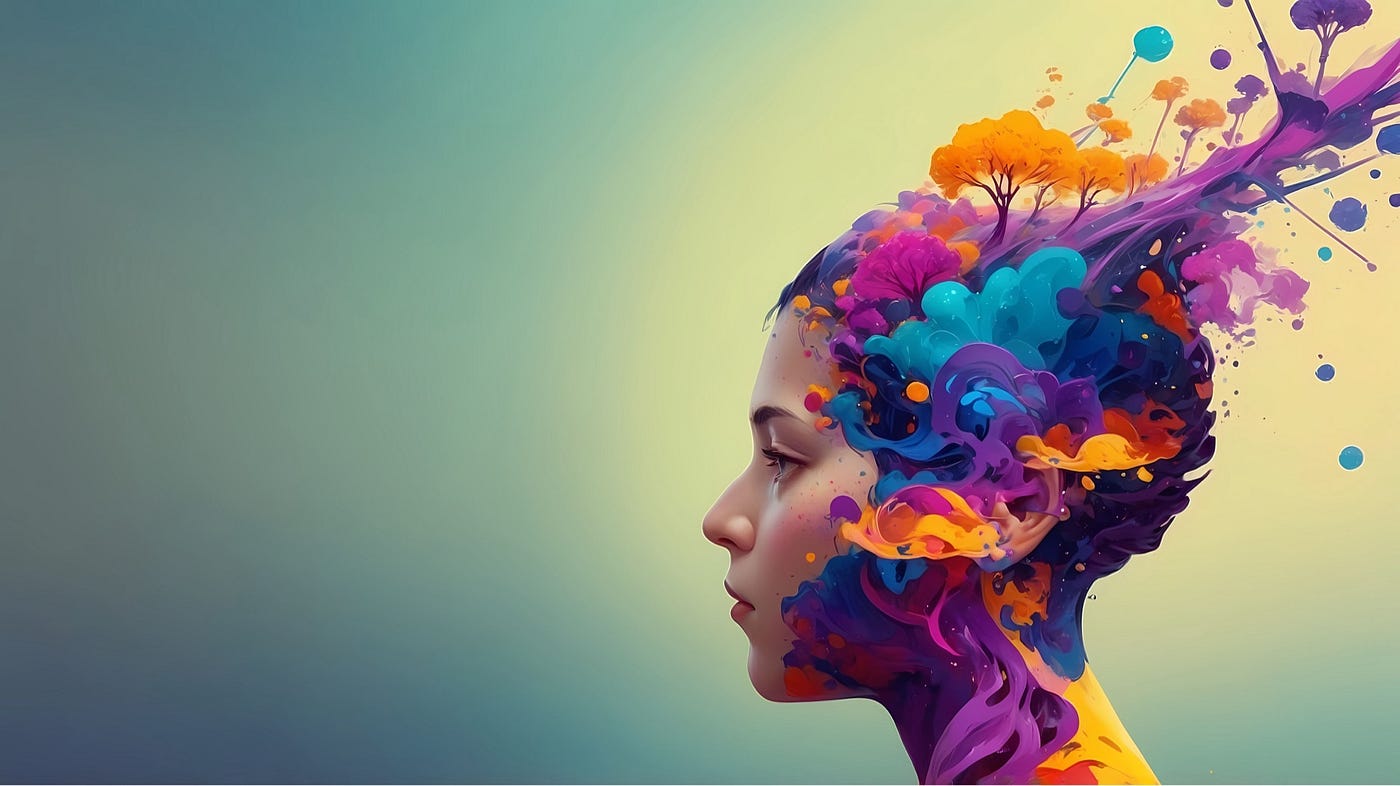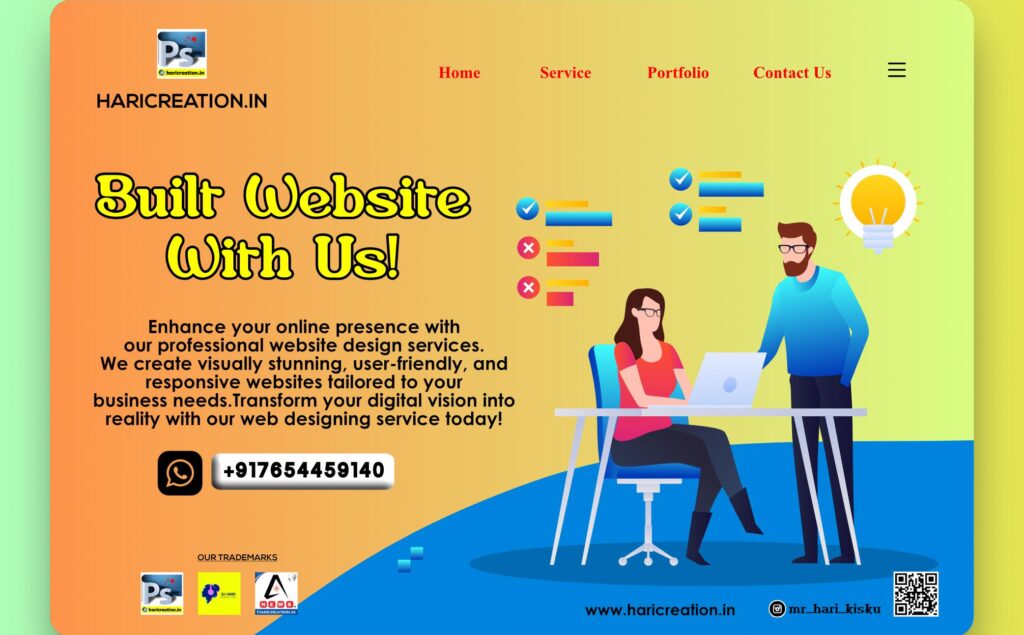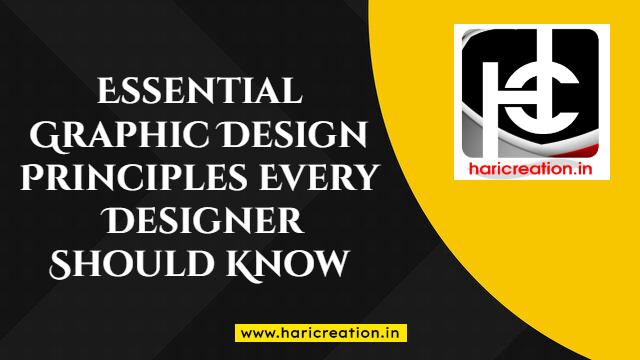Colors have a unique way of speaking to us. They trigger emotions, influence decisions, and shape our perceptions. In the world of graphic design, color psychology plays a crucial role in creating powerful visual communication. Every color has a meaning, and understanding how to use them effectively can make designs more impactful.
What is Color Psychology?
Color psychology is the study of how colors affect human emotions and behavior. It explores how different shades can create specific moods and influence the way people respond to visual content. This psychological impact of colors is widely used in marketing, branding, and graphic design to evoke certain feelings and encourage desired actions.

Why is Color Psychology Important in Graphic Design?
Graphic design is all about visual storytelling, and color is one of its most powerful tools. Colors help in:
- Setting the Mood: Different colors evoke different emotions. Warm colors like red and orange create excitement, while cool colors like blue and green offer calmness.
- Brand Identity: Brands use specific colors to create a unique identity and connect with their audience.
- User Experience: Colors can guide users, improve readability, and make a design visually appealing.
- Decision Making: Studies show that color influences purchasing decisions. A well-chosen color scheme can attract attention and encourage action.
The Meaning of Colors in Graphic Design
Every color has its own psychological impact. Here’s a breakdown of common colors and their meanings in design:
Red: Energy, Passion, and Urgency
Red is a bold color that grabs attention and creates a sense of urgency. It is often used in sales promotions, call-to-action buttons, and food brands. Brands like Coca-Cola and YouTube use red to evoke excitement and energy.
Blue: Trust, Calmness, and Stability
Blue is associated with trust and professionalism. It is widely used in corporate branding, healthcare, and technology companies like Facebook and LinkedIn. Blue creates a sense of security and reliability.
Yellow: Happiness, Optimism, and Warmth
Yellow is bright and cheerful, often used to create a friendly and positive vibe. Brands like McDonald’s use yellow to create a welcoming feel. However, too much yellow can be overwhelming, so it must be used carefully.

Green: Growth, Nature, and Health
Green represents nature, health, and sustainability. It is used by brands that promote eco-friendliness, wellness, and financial stability, such as Whole Foods and Starbucks.
Orange: Creativity, Energy, and Playfulness
Orange is energetic and playful, making it a great choice for brands that want to appear fun and friendly. It is commonly used in entertainment, sports, and youth-oriented businesses.
Purple: Luxury, Creativity, and Wisdom
Purple is associated with royalty, luxury, and creativity. High-end brands like Cadbury and Hallmark use purple to create a sense of sophistication.
Black: Power, Elegance, and Mystery
Black is often used in luxury brands and high-end fashion because of its elegant and timeless appeal. It creates a sense of exclusivity and authority.
White: Simplicity, Cleanliness, and Minimalism
White represents simplicity and purity. It is commonly used in healthcare, technology, and minimalist designs to create a clean and modern look.
How to Use Color Psychology in Graphic Design
✅Understand the Target Audience
Before choosing colors, it’s important to understand the target audience. Different cultures and demographics perceive colors differently. For example, while white symbolizes purity in Western cultures, it represents mourning in some Eastern cultures.
✅Create a Balanced Color Palette
Using too many colors can make a design look cluttered, while using too few can make it dull. A well-balanced color palette includes:
- Primary Color: The main color that represents the brand or design.
- Secondary Colors: Complementary colors that enhance the primary color.
- Accent Colors: Used sparingly to highlight key elements.

✅Use Contrast for Readability
Contrast helps in making text and visuals stand out. Dark text on a light background (or vice versa) improves readability. Using complementary colors can create visually appealing contrast.
✅Apply Colors to Evoke Emotions
Colors should match the message of the design. For example, a financial services website may use blue for trust, while a kids’ brand may use bright colors like yellow and orange to appear fun and playful.
✅Test and Optimize
Color choices should be tested to see how audiences respond. A/B testing different color schemes can help determine which one works best for conversions and engagement.
Common Mistakes to Avoid in Color Psychology
- Using Too Many Colors: Overloading a design with colors can make it overwhelming and confusing.
- Ignoring Cultural Differences: Some colors may have different meanings in various cultures.
- Not Considering Accessibility: Colors should be accessible to people with visual impairments. Using high contrast and readable fonts can help.
- Neglecting Brand Consistency: A brand should maintain a consistent color scheme to strengthen its identity.
The Future of Color Psychology in Graphic Design
As technology advances, color psychology in graphic design will continue to evolve. Trends such as color gradients, dark mode designs, and AI-driven color suggestions are shaping the future of visual communication. Designers are also focusing more on inclusive and accessible color choices to create a better user experience.
Conclusion
Color psychology in graphic design is a powerful tool that shapes emotions, influences decisions, and enhances brand identity. By understanding how colors affect human psychology, designers can create visually appealing and effective designs that connect with audiences. Whether for branding, marketing, or user experience, the right color choices can make a significant impact.
For more insights on graphic design trends and techniques, stay updated with the latest industry knowledge!

Discover more from Hari Creation
Subscribe to get the latest posts sent to your email.





vorbelutrioperbir
January 25, 2025The next time I read a weblog, I hope that it doesnt disappoint me as much as this one. I mean, I do know it was my option to read, however I actually thought youd have one thing interesting to say. All I hear is a bunch of whining about one thing that you might fix if you happen to werent too busy looking for attention.
https://crypto-city.pro/
January 25, 2025I am not very good with English but I line up this very easygoing to read .
https://crypto-city.pro/
January 25, 2025Very nice post. I just stumbled upon your blog and wished to say that I have truly enjoyed surfing around your blog posts. After all I will be subscribing to your rss feed and I hope you write again very soon!
learn more
January 25, 2025Hi there, I discovered your site by way of Google at the same time as searching for a similar topic, your web site came up, it looks good. I have bookmarked it in my google bookmarks.
click over here
January 25, 2025Hiya, I am really glad I have found this info. Today bloggers publish only about gossips and net and this is actually irritating. A good website with exciting content, this is what I need. Thank you for keeping this web-site, I’ll be visiting it. Do you do newsletters? Can not find it.
Kerassentials
January 25, 2025I like what you guys are up too. Such intelligent work and reporting! Keep up the superb works guys I’ve incorporated you guys to my blogroll. I think it’ll improve the value of my web site :).
boyarka
January 25, 2025Hi thnere to every single one, it’s actually a pleasant ffor me to pay a quick
visit this wweb site, it consists of useful Information.
nextogel
January 25, 2025Hi my family member! I want to say that this article is awesome, nice written and include approximately all significant infos. I’d like to see more posts like this .
neurocept
January 25, 2025Normally I do not read post on blogs, however I wish to say that this write-up very pressured me to try and do so! Your writing taste has been amazed me. Thanks, very nice article.
kingjililogin
January 25, 2025Kingjililogin made it super easy to create an account and jump into the action. No messing around. The site is fast, and it runs smoothly on my phone. Thumbs up! Head over to kingjililogin.
cwinsgame
January 25, 2025Okay, so I jumped into cwinsgame just to see what’s up. Surprisingly good games! I spent way too long playing one. Definitely worth a look if you’re bored. –> cwinsgame
cassino444
January 25, 2025Looking for a new online casino, eh? cassino444 might be worth a peek. It has a bunch of games, and the graphics looked pretty decent. Worth to take a look around: cassino444
bandar togel terpercaya
January 25, 2025Do you have a spam issue on this website; I also am a blogger, and I was curious about your situation; we have developed some nice procedures and we are looking to swap solutions with other folks, please shoot me an email if interested.
Neurosilence
January 25, 2025Hello! I just would like to give a huge thumbs up for the great info you have here on this post. I will be coming back to your blog for more soon.
tut888
January 25, 2025Alright, alright, let’s talk about tut888! Been hearing some buzz ’round the virtual water cooler. Seems like a decent spot to try your luck. I’d say, give it a shot and see what you think! Check it out: tut888
rss99
January 25, 2025I stumbled upon RSS99 recently. It’s got a good range of games to choose from. I haven’t had any major issues, so I’d give it a thumb’s up. Check it out yourself: rss99